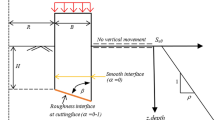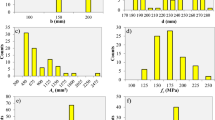Abstract
Ecological concrete has excellent water and air permeability, which not only is conducive to plant growth but also allows surface water to infiltrate underground and intercept pollutants. The performance of ecological concrete is largely determined by the nature of the raw materials and their relative content. Therefore, mastering the optimal design method for the mix proportion of ecological concrete is crucial to achieving good performance. In the current research, there is a lack of systematic intelligent decision-making models for predicting performance and optimizing mix proportions. In this paper, four factors, namely mechanical properties, water permeability, decontamination properties, and planting properties of ecological concrete, were considered when evaluating the comprehensive performance of ecological concrete. The evaluation was conducted using the analytic hierarchy process (AHP). The gray wolf optimizer (GWO) was introduced to enhance the backpropagation (BP) neural network, and an optimization model for finding the optimal ecological concrete mix proportion was established. The optimal mix proportion of two types of typical ecological concrete, one for filtration and one for plant growth, was discussed. The results indicate that the AHP-GWO-BP model calculates the optimal mixing proportion of filtration ecological concrete as follows: The diameter of coarse aggregate is 10–15 mm, with adsorbed coarse aggregate accounting for 49.7%, a component ratio is 118%, the water–cement ratio should be 28.7%, and the silica fume mix ratio should be 32.1%. According to the given parameters, the performance test of ecological concrete is conducted, with a coarse aggregate size of 12 mm. The results showed that under these parameters, the compressive strength was 12.3 MPa, the flexural strength was 3.35 MPa, the water permeability coefficient was 14.87 cm s−1, the porosity was 27.23%, the removal rate of total nitrogen was 80.56%, the removal rate of total phosphorus was 67.33%, the pH was 9.16, and the plant dry weight was 9.37 g. The optimal mix proportion of the planting ecological concrete is as follows: The diameter of the coarse aggregate is 20–25 mm, the adsorbed coarse aggregate accounts for 49.7%, its component ratio is 138%, the water–cement ratio should be 27.3%, and the silica fume mix ratio should be 34.1%.
Highlights
-
An orthogonal test optimization method based on AHP-GWO-BP neural network
-
Two types of multi-aggregate ecological concrete utilizing multiple adsorbent materials as coarse aggregates
-
Simulation and prediction of various aspects of the performance of ecological concrete under different factors







Similar content being viewed by others
Data availability
The data that support the findings of this study are available from the corresponding author, [LS], upon reasonable request.
References
Abd Elhakam A, Mohamed AE, Awad E (2012) Influence of self-healing, mixing method and adding silica fume on mechanical properties of recycled aggregates concrete. Constr Build Mater 35:421–427. https://doi.org/10.1016/j.conbuildmat.2012.04.013
Akbarpour A, Mahdikhani M, Moayed RZ (2021) Mechanical behavior and permeability of plastic concrete containing natural zeolite under triaxial and uniaxial compression. J Mater Civil Eng 34(02):04021453. https://doi.org/10.1061/(ASCE)MT.1943-5533.0004093
Akbarpour A, Mahdikhani M, Moayed RZ (2022) Effects of natural zeolite and sulfate ions on the mechanical properties and microstructure of plastic concrete. Front Struct Civil Eng 16:86–98. https://doi.org/10.1007/s11709-021-0793-x
Ansari MA, Shariq M, Mahdi F (2023) Geopolymer concrete for clean and sustainable construction: a state-of-the-art review on the mix design approaches. Structures 55:1045–1070. https://doi.org/10.1016/j.istruc.2023.06.089
Çakır Ö, Sofyanlı ÖÖ (2015) Influence of silica fume on mechanical and physical properties of recycled aggregate concrete. HBRC J 11(2):157–166. https://doi.org/10.1016/j.hbrcj.2014.06.002
Chen W, Lu S, Zhu Z, Mu S, He Z, Iop, (2019) Experimental study on compressive strength factors of ecological concrete. Int Worksh Renew Energy Dev (IWRED). https://doi.org/10.1088/1755-1315/267/4/042145
China SEPAO (2002) Water and waste water monitoring and analysis method, 4th edn. Environmental Science Press of China, Beijing
Chindaprasirt P, Hatanaka S, Chareerat T, Mishima N, Yuasa Y (2008) Cement paste characteristics and porous concrete properties. Constr Build Mater 22(5):894–901. https://doi.org/10.1016/j.conbuildmat.2006.12.007
Cui Z, Wang D, Zhu Y, Tang X (2020) Research progress on the effects of admixture materials on the properties of pervious concrete. China Concr Cem Prod 47:83–91. https://doi.org/10.19761/j.1000-4637.2020.11.083.05
Federation CBM (2011) Permeable paving bricks & permeable paving flags. Federation CBM
Gonzalez-Fonteboa B, Martinez-Abella F (2008) Concretes with aggregates from demolition waste and silica fume, Materials and mechanical properties. Build Environ 43(4):429–437. https://doi.org/10.1016/j.buildenv.2007.01.008
Guan S, Mao Z, Wu A, Zhang H (2019) Research and application of basic properties of concrete with steel slag as aggregate Western China. Commun Sci Technol 14:12–22. https://doi.org/10.13282/j.cnki.wccst.2019.07.001
Huang X, Liu C, Wang Z, Gao C, Zhu G, Liu L (2013) The effects of different substrates on ammonium removal in constructed wetlands: a comparison of their physicochemical characteristics and ammonium-oxidizing prokaryotic communities. Clean-Soil Air Water 41(3):283–290. https://doi.org/10.1002/clen.201200369
Huang J, Zhang Y, Sun Y, Ren J, Zhao Z, Zhang J (2021) Evaluation of pore size distribution and permeability reduction behavior in pervious concrete. Constr Build Mater 290:123228. https://doi.org/10.1016/j.conbuildmat.2021.123228
Inglezakis VJ, Fyrillas MM, Stylianou MA (2018) Two-phase homogeneous diffusion model for the fixed bed sorption of heavy metals on natural zeolites. Microporous Mesoporous Mater 266:164–176. https://doi.org/10.1016/j.micromeso.2018.02.045
Jiang T, Chen J, Li L, Guo J, Wu G, Wei M (2019) Review of research progress on the preparation and properties of vegetation concrete. New Build Mater 46(03):8–12
Jiangsu Construction Engineering Group Co L (2009) Technical specifications for pervious concrete pavement. Jiangsu Construction Engineering Group Co L. https://doi.org/10.3969/j.issn.1001-702X.2019.03.003
Jin Y, Zhao Y, Wang B, Fan W (2021) Mix optimization design of platgrowing recycled concrete based on orthogonality test. J xi’an Univ of Arch Tech (natl Sci Edit) 53:47–52. https://doi.org/10.15986/j.1006-7930.2021.01.007
Kaur P, Singh Sandhu K, Singh Purewal S, Kaur M, Kumar Singh S (2021) Rye: a wonder crop with industrially important macromolecules and health benefits. Food Res Int 150:110769. https://doi.org/10.1016/j.foodres.2021.110769
Koya BP, Aneja S, Gupta R, Valeo C (2022) Comparative analysis of different machine learning algorithms to predict mechanical properties of concrete. Mech Adv Mater Struct 29:4032–4043. https://doi.org/10.1080/15376494.2021.1917021
Li Y, Hu C (2017) Experiment design and data processing, 3rd edn. Chemical Industry Press, Beijing
Liu G (2021) Optimization of plant concrete mix ratio and planting experiment research master. Taiyuan Univ Technol. https://doi.org/10.27352/d.cnki.gylgu.2021.001449
Liu P (2023) Study on the purification effect of vegetation concrete ecological slope protection for rainwater runoff. Master Chongqing Jiaotong University
Liu L, Ji J, Guo Y, Chen J (2021) Use of ecological concrete for nutrient removal in coastal sediment and its effects on sediment microbial communities. Mar Pollut Bull J Clean Prod 162:111911. https://doi.org/10.1016/j.marpolbul.2020.111911
Mirjalili S, Mirjalili SM, Lewis A (2014) Grey Wolf optimizer. Adv Eng Softw 69:46–61. https://doi.org/10.1016/j.advengsoft.2013.12.007
Park SB, Tia M (2004) An experimental study on the water-purification properties of porous concrete. Cem Concr Res 34(2):177–184. https://doi.org/10.1016/s0008-8846(03)00223-0
Park SB, Seo DS, Lee J (2005) Studies on the sound absorption characteristics of porous concrete based on the content of recycled aggregate and target void ratio. Cem Concr Res 35(9):1846–1854. https://doi.org/10.1016/j.cemconres.2004.12.009
Park SB, Lee BJ, Lee J, Jang YI (2010) A study on the seawater purification characteristics of water-permeable concrete using recycled aggregate. Resour Conserv Recycl 54(10):658–665. https://doi.org/10.1016/j.resconrec.2009.11.006
Qi M (2019) Cement based planting ecological concrete preparation technology work performance study. Master Hebei University of Architecture
Quan H (2015) Coexistence of porous ecological concrete with plants. Bull Chin Ceram Soc 34(07):1985–1988. https://doi.org/10.16552/j.cnki.issn1001-1625.2015.07.044
Research CAOB (2003) Standard for test methods of mechanical properties on ordinary concrete. Research CAOB
Sriravindrarajah R, Wang NDH, Ervin LJW (2012) Mix design for pervious recycled aggregate concrete. Int J Concr Struct Mater 6(4):239–246. https://doi.org/10.1007/s40069-012-0024-x
Stefanakis AI, Tsihrintzis VA (2012) Use of zeolite and bauxite as filter media treating the effluent of vertical flow constructed wetlands. Microporous Mesoporous Mater 155:106–116. https://doi.org/10.1016/j.micromeso.2012.01.022
Tan S (2020) Study on the technology of reducing alkali in planting concrete and the adaptability of plants. Master Guangzhou University. https://doi.org/10.27040/d.cnki.ggzdu.2020.000742
Torres A, Hu J, Ramos A (2015) The effect of the cementitious paste thickness on the performance of pervious concrete. Constr Build Mater 95:850–859. https://doi.org/10.1016/j.conbuildmat.2015.07.187
Uzun O, Gokalp Z, Irik HA, Varol IS, Kanarya FO (2021) Zeolite and pumice-amended mixtures to improve phosphorus removal efficiency of substrate materials from wastewaters. J Clean Prod 317:128444. https://doi.org/10.1016/j.jclepro.2021.128444
Wang L, Zhang Z, Ding A, Cheng R, Zhang M, Wu D (2018) Modification of zeolite materials and their adsorption properties for the pollutants in aqueous solution. Chem Ind Eng Progr 37:2269–2281. https://doi.org/10.16085/j.issn.1000-6613.2017-1334
Wang F, Sun C, Ding X, Kang T, Nie X (2019) Experimental study on the vegetation growing recycled concrete and synergistic effect with plant roots. Materials. https://doi.org/10.3390/ma12111855
Wu Z (1998) Green high performance concrete: the development direction of concrete. China Concr Cem Prod. https://doi.org/10.3866/PKU.WHXB201112303
Wu G, Sun Y, Xie J, Lu Y (2019) Research on pollution prevention and control BAT of PCDD/Fs in secondary copper industry. Ecotoxicol Environ Saf 181:308–311. https://doi.org/10.1016/j.ecoenv.2019.05.077
Xi B, Zhang N, Duan H, He J, Song G, Li H, Shi X (2023) Optimization of rice husk ash concrete design towards economic and environmental assessment. Environ Impact Assess Rev 103:107229. https://doi.org/10.1016/j.eiar.2023.107229
Xie L, Luo P (2022) Ecological concrete slope protection and its application in river embankment reinforcement project. Eng Technol Res 7(112):67–69. https://doi.org/10.19537/j.cnki.2096-2789.2022.08.020
Yan B, Miao Y, Gao Z, Liu R (2022) Study on Purification Effect of TN and TP in Sewage by Porous Concrete and Different Combination of Aquatic Plants. J Shenyang Agric Univ 53(01):63–72. https://doi.org/10.3969/j.issn.1000-1700.2022.01.008
Yang F, Chen X, Yao Y, Chen D, Chen C (2020) Orthogonal design and experimental study in permeability performance of permeable concrete. Constr Technol 49(03):70–73
Zhang Y, Li H, Abdelhady A, Yang J, Wang H (2021) Effects of specimen shape and size on the permeability and mechanical properties of porous concrete. Constr Build Mater 266:121074. https://doi.org/10.1016/j.conbuildmat.2020.121074
Zhang W, Yuan Z, Li D, Zhang K, Zhao L (2022) Mechanical and vegetation performance of porous concrete with recycled aggregate in riparian buffer area. J Clean Prod 332:130015. https://doi.org/10.1016/j.jclepro.2021.130015
Zhu P, Zhang X (2015) Research situation and trend of development of ecologically permeable recycled aggregate concrete. Concrete 37:144–148. https://doi.org/10.3969/j.issn.1002-3550.2015.10.035
Zhu Y, Gu C, Zhao E, Song J, Guo Z (2016) Structural safety monitoring of high arch dam using improved ABC-BP model. Math Probl Eng. https://doi.org/10.1155/2016/6858697
Zhu Y, Li J, Huang J, Xie Y (2019) Experimental study of sand-free pervious concrete. Bull Chin Ceram Soc 38(04):1006–1011. https://doi.org/10.16552/j.cnki.issn1001-1625.2019.04.013
Funding
This research was funded by State Key Laboratory of Hydraulic Engineering Intelligent Construction and Operation, Tianjin University, China, Grant no [2020HESS2003].
Author information
Authors and Affiliations
Contributions
DG conceived the data, designed the methodology, and developed the software; DG and WQ curated the data and wrote and prepared the original draft; DG and ZY visualized and investigated the manuscript; WX supervised the data; WQ designed the software and validated the data; and LS wrote, reviewed, and edited the manuscript.
Corresponding author
Ethics declarations
Conflict of Interest
The authors declare that they have no known competing financial interests or personal relationships that could have appeared to influence the work reported in this paper.
Rights and permissions
Springer Nature or its licensor (e.g. a society or other partner) holds exclusive rights to this article under a publishing agreement with the author(s) or other rightsholder(s); author self-archiving of the accepted manuscript version of this article is solely governed by the terms of such publishing agreement and applicable law.
About this article
Cite this article
Guangyao, D., Songmin, L., Xiaoling, W. et al. Optimal Design of Ecological Concrete Mix Proportion Based on AHP-GWO-BP Neural Network. Int J Environ Res 18, 24 (2024). https://doi.org/10.1007/s41742-023-00562-6
Received:
Revised:
Accepted:
Published:
DOI: https://doi.org/10.1007/s41742-023-00562-6




